|
|
The Holy and Great Martyr Panteleimon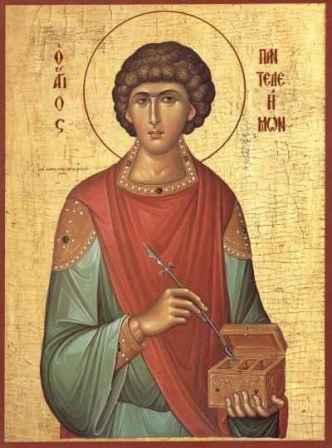 Born in Nicomedia of a Christian mother, Eubula, and a pagan father, Eustorgius, he studied medicine as a young man. The priest Hermolaus befriended him, instructed him in the Christian faith and baptised him. Panteleimon miraculously healed a blind man whom other doctors had treated in vain: he healed him by the name of Christ and baptised him. From jealousy, the doctors denounced Panteleimon as a Christian, and he went before the Emperor Maximian for judgement. "He stood before the earthly ruler in the body, but in his mind he stood before the heavenly King." He freely declared himself to be a Christian before the Emperor, and, in front of his eyes, healed a paralytic of a long infirmity. This miracle brought many of the pagans to the Christian faith. The Emperor put him to torture, but the Lord appeared to him on several occasions and delivered him whole and uninjured. Then St Hermolaus suffered, along with Hermippus and Hermocrates. Condemned to death, St Panteleimon knelt in prayer. At that, the executioner gave him a blow on the neck with his sword, and the sword broke as if made of wax. The executioner could not kill him until he had finished his prayer and had himself given the word to behead him. Panteleimon was beheaded under an olive tree, which after that became laden with fruit. "Panteleimon" means "all-merciful". God the all-merciful received his righteous soul, and glorified him among His greatest saints, his relics remaining incorrupt. This wonderful martyr suffered with honour as a youth for Christ on July 27th, 304. St Panteleimon is invoked in the prayers at the blessing of water and the blessing of oil, together with St Hermolaus and the other unmercenaries and wonderworkers. The loveliest church dedicated to him is to be found on the Holy Mountain. Born in Nicomedia of a Christian mother, Eubula, and a pagan father, Eustorgius, he studied medicine as a young man. The priest Hermolaus befriended him, instructed him in the Christian faith and baptised him. Panteleimon miraculously healed a blind man whom other doctors had treated in vain: he healed him by the name of Christ and baptised him. From jealousy, the doctors denounced Panteleimon as a Christian, and he went before the Emperor Maximian for judgement. "He stood before the earthly ruler in the body, but in his mind he stood before the heavenly King." He freely declared himself to be a Christian before the Emperor, and, in front of his eyes, healed a paralytic of a long infirmity. This miracle brought many of the pagans to the Christian faith. The Emperor put him to torture, but the Lord appeared to him on several occasions and delivered him whole and uninjured. Then St Hermolaus suffered, along with Hermippus and Hermocrates. Condemned to death, St Panteleimon knelt in prayer. At that, the executioner gave him a blow on the neck with his sword, and the sword broke as if made of wax. The executioner could not kill him until he had finished his prayer and had himself given the word to behead him. Panteleimon was beheaded under an olive tree, which after that became laden with fruit. "Panteleimon" means "all-merciful". God the all-merciful received his righteous soul, and glorified him among His greatest saints, his relics remaining incorrupt. This wonderful martyr suffered with honour as a youth for Christ on July 27th, 304. St Panteleimon is invoked in the prayers at the blessing of water and the blessing of oil, together with St Hermolaus and the other unmercenaries and wonderworkers. The loveliest church dedicated to him is to be found on the Holy Mountain.St Clement, Archbishop of Ochrid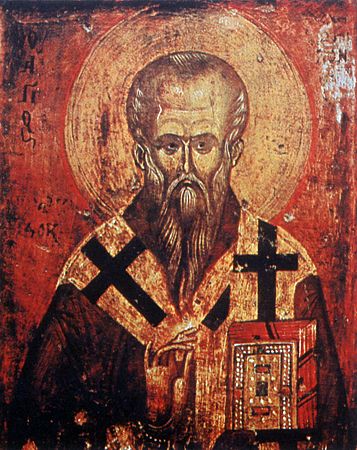 He was a disciple of Saints Methodius and Cyril. After St Methodius" death, Clement, under pressure from the Germans, left Moravia for the south. With Gorazd, Nahum, Sava and Angelarius - together called the Five Companions - he crossed the Danube, stayed with King Boris Michael and then went to the Ochrid region. He first founded a monastery at Belica, which he made his first episcopal seat, and later moved to Ochrid, from which centre he covered a large area with his episcopal and teaching labours. In Ochrid, St Clement built a church to St Panteleimon. He had many followers, who copied books in Slavonic script for the use of the Slav people, being especially helped in this work by St Nahum. He performed miracles both during his lifetime and through his relics, which have healing power down to the present day. They lie in the church formerly dedicated to the Mother of God, which was later re-dedicated to St Clement. After great labours and faithful service of God, he entered peacefully into rest in 916. He was a disciple of Saints Methodius and Cyril. After St Methodius" death, Clement, under pressure from the Germans, left Moravia for the south. With Gorazd, Nahum, Sava and Angelarius - together called the Five Companions - he crossed the Danube, stayed with King Boris Michael and then went to the Ochrid region. He first founded a monastery at Belica, which he made his first episcopal seat, and later moved to Ochrid, from which centre he covered a large area with his episcopal and teaching labours. In Ochrid, St Clement built a church to St Panteleimon. He had many followers, who copied books in Slavonic script for the use of the Slav people, being especially helped in this work by St Nahum. He performed miracles both during his lifetime and through his relics, which have healing power down to the present day. They lie in the church formerly dedicated to the Mother of God, which was later re-dedicated to St Clement. After great labours and faithful service of God, he entered peacefully into rest in 916.Blessed Nicolas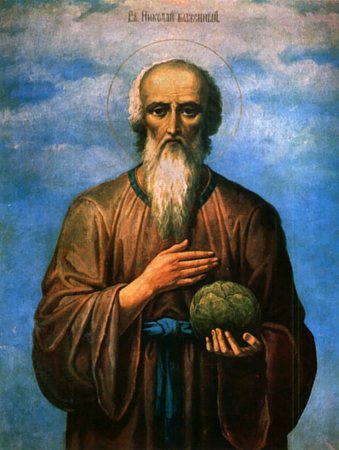 A fool for Christ of Novgorod, he was the son of wealthy parents. He left his riches, and ran as a fool through the streets, teaching the people through his madness. His companion in the same ascesis was Blessed Theodore. Running at one time in the sight of the people, they both crossed a river on the surface of the water. Blessed Nicolas entered into rest in the Lord in 1392. A fool for Christ of Novgorod, he was the son of wealthy parents. He left his riches, and ran as a fool through the streets, teaching the people through his madness. His companion in the same ascesis was Blessed Theodore. Running at one time in the sight of the people, they both crossed a river on the surface of the water. Blessed Nicolas entered into rest in the Lord in 1392.Our Holy Mother Anthusa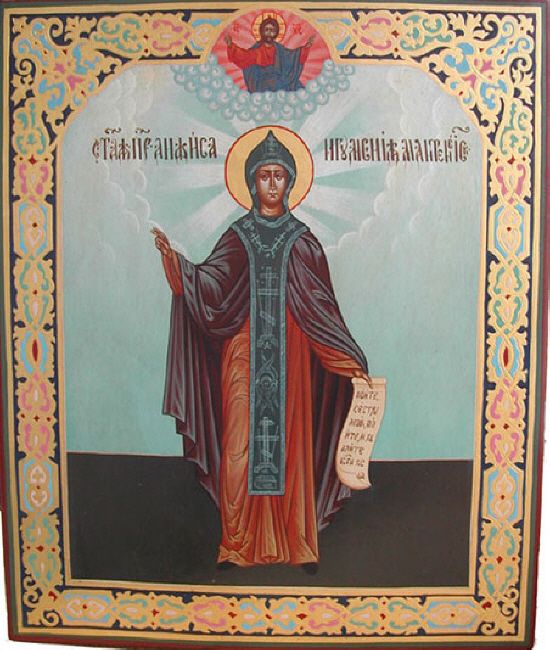 After long asceticism in solitude, she founded a monastery of ninety nuns. During the iconoclast persecution under Constantine Copronymos, all ninety nuns were murdered, and after that St Anthusa herself died, in 759. After long asceticism in solitude, she founded a monastery of ninety nuns. During the iconoclast persecution under Constantine Copronymos, all ninety nuns were murdered, and after that St Anthusa herself died, in 759.The Hundred and Fifty Three MartyrsDrowned in the sea in Thrace.
The blind man who confessed Christ and was martyred with St. Panteleimon
Martyr Christodulus (1777)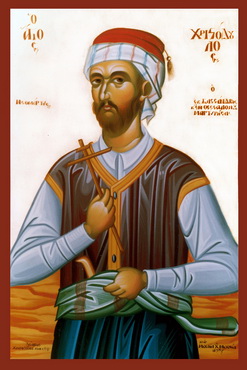 He was born in the village of Valta, district of Cassandra, and was engaged in the craft of tailor in Salonica. For his accusation of the apostasy of a Bulgarian and for being unwilling to accept Islam, after torture the Turks hanged him in 1777. He was born in the village of Valta, district of Cassandra, and was engaged in the craft of tailor in Salonica. For his accusation of the apostasy of a Bulgarian and for being unwilling to accept Islam, after torture the Turks hanged him in 1777.St. Manuel, monk
St. Ioasaph, metropolitan of Moscow (1555)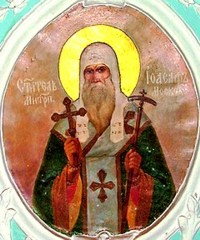 From the noble family of the Skriptsins, at first a monk in the Monastery of the Ven. Sergius and then its rector, in 1539 he was elected Metropolitan of Moscow. His diligence to put an end to the violence and robberies committed by the Shuisky boyars drew upon him the terrible hatred of the latter. Through their intrigues and after many offences and violence, St. Ioasaph was banished to the St. Cyril Monastery, from where he was then transferred to the St. Sergius Laura. Here in 1555 St. Ioasaph died. His relics repose in a hidden place in the St. Serapion Vault in the Holy Trinity Laura. From the noble family of the Skriptsins, at first a monk in the Monastery of the Ven. Sergius and then its rector, in 1539 he was elected Metropolitan of Moscow. His diligence to put an end to the violence and robberies committed by the Shuisky boyars drew upon him the terrible hatred of the latter. Through their intrigues and after many offences and violence, St. Ioasaph was banished to the St. Cyril Monastery, from where he was then transferred to the St. Sergius Laura. Here in 1555 St. Ioasaph died. His relics repose in a hidden place in the St. Serapion Vault in the Holy Trinity Laura. |